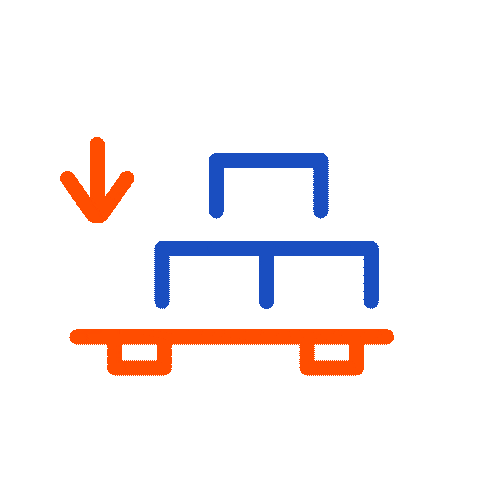
Container Shipping to Hong Kong — Get Instant Quotes



Why Choose iContainers for Shipping to Hong Kong?
- Asia’s long-standing maritime hub. The Port of Hong Kong handled 13.69 million TEU in 2024, retaining its spot among the world’s 10 busiest ports despite regional competition. (seatrade-maritime.com)
- World-#1 air-cargo gateway. Hong Kong International Airport (HKIA) moved 4.9 million tones of freight in 2024, topping the global ranking for the 14 th time. (hongkongairport.com)
- One dashboard, every mode. Instant FCL and LCL quotes to Kwai Tsing Container Terminals, plus optional air-freight upgrades via HKIA—all bookable online with 24/7 tracking.
- Minimal duties. Apart from a short list of dutiable commodities (hydrocarbon oils, tobacco, alcohol, methylated spirits), Hong Kong levies zero import duty on most goods, cutting landed costs. (customs.gov.hk)
Our Container Shipping Services to Hong Kong
Full Container Load (FCL)
High-volume shippers land sealed 20', 40' & 40'HC boxes directly at Kwai Tsing Container Terminals (Terminals 1–9)—ideal for electronics, fashion, industrial machinery and perishable reefer traffic. (en.wikipedia.org)
Less-than-Container Load (LCL)
SMEs, sourcing agents and e-commerce brands move < 15 m³ in weekly LCL consolidations that devan in bonded depots inside the free-port, saving up to 60 % versus unused FCL space.
Popular mode: FCL remains dominant for re-exports to South China; LCL is booming for Amazon, Shopify and small-batch fashion drops.
Primary port / airport: Kwai Tsing Container Terminals (KTCT) for ocean; urgent cargo via HKIA (HKG).
Typical cargo: Consumer electronics, garments, watches & jewelry, machinery spares.
Transit-time snapshots:
- Los Angeles → Hong Kong: ≈ 15–18 days port-to-port on the TP9 loop.
- Rotterdam → Hong Kong: ≈ 29–34 days on Asia-North-Europe services.
Local tip: Port throughput hit a 28-year low in 2024, freeing berth capacity—late bookings stand a better chance of securing space. (seatrade-maritime.com)
Alternative option: Air freight trims door-to-door to 3–5 days via HKIA’s new three-runway system, designed for up to 10 million t of cargo annually. (thesun.co.uk)
Container shipping rates to Hong Kong
How much does it cost to ship a container to Hong Kong?
How Long Does It Take to Ship a Container to Hong Kong?
- Pearl-River-Delta feeders (South China): 1–2 days
- US West Coast → Hong Kong: 15–18 days
- North Europe → Hong Kong: 29–34 days
Air freight door-to-door: 3–5 days via HKIA.
Popular Routes and Ports for Shipping to Hong Kong
Trans-Pacific services (LA/Long Beach ↔ Hong Kong) and Asia-Europe loops (Rotterdam ↔ Hong Kong) call Kwai Tsing weekly. Cross-border trucks and barges link Hong Kong to Shenzhen, Guangzhou and Dongguan free-trade zones in ≤ 24 h.
Steps to Book Your Container Shipment with iContainers
- Quote & Compare — Enter origin, destination and cargo specs for an instant rate.
- Upload Docs — Commercial invoice, packing list & HS codes (no VAT paperwork needed).
- Book & Pay — Confirm sailing and pay securely.
- Track — Follow vessel milestones and customs status in real time.
- Clear — Most goods clear instantly; dutiable items pay fixed rates per litre / kg. (customs.gov.hk)
- Deliver — Arrange final-mile truck to warehouse, 3PL, or cross-border Shenzhen hub.
What Can You Ship in a Container to Hong Kong?
Common commodities
- Smartphones
- Apparel
- Watches & jewellery
- Pharma & healthcare
- Industrial machinery
Restricted / Dutiable goods
Alcohol, tobacco, hydrocarbon oils, methyl-alcohol (fixed duty rates); strategic commodities require import license.
FAQs About Shipping Containers to Hong Kong
No—Hong Kong does not levy VAT/GST; only a handful of excise-dutiable goods incur duty. (customs.gov.hk)
Yes—below 15 m³ you avoid paying for unused FCL space, typically saving 40–60 %.
Not mandatory, but strongly recommended—add door-to-door cover at checkout.
Secure FCL or LCL space 6–8 weeks ahead of the late-January surge to avoid roll-overs and rate spikes.